
How to Use 4S Battery 18650 Lithium ion: Examples, Pinouts, and Specs
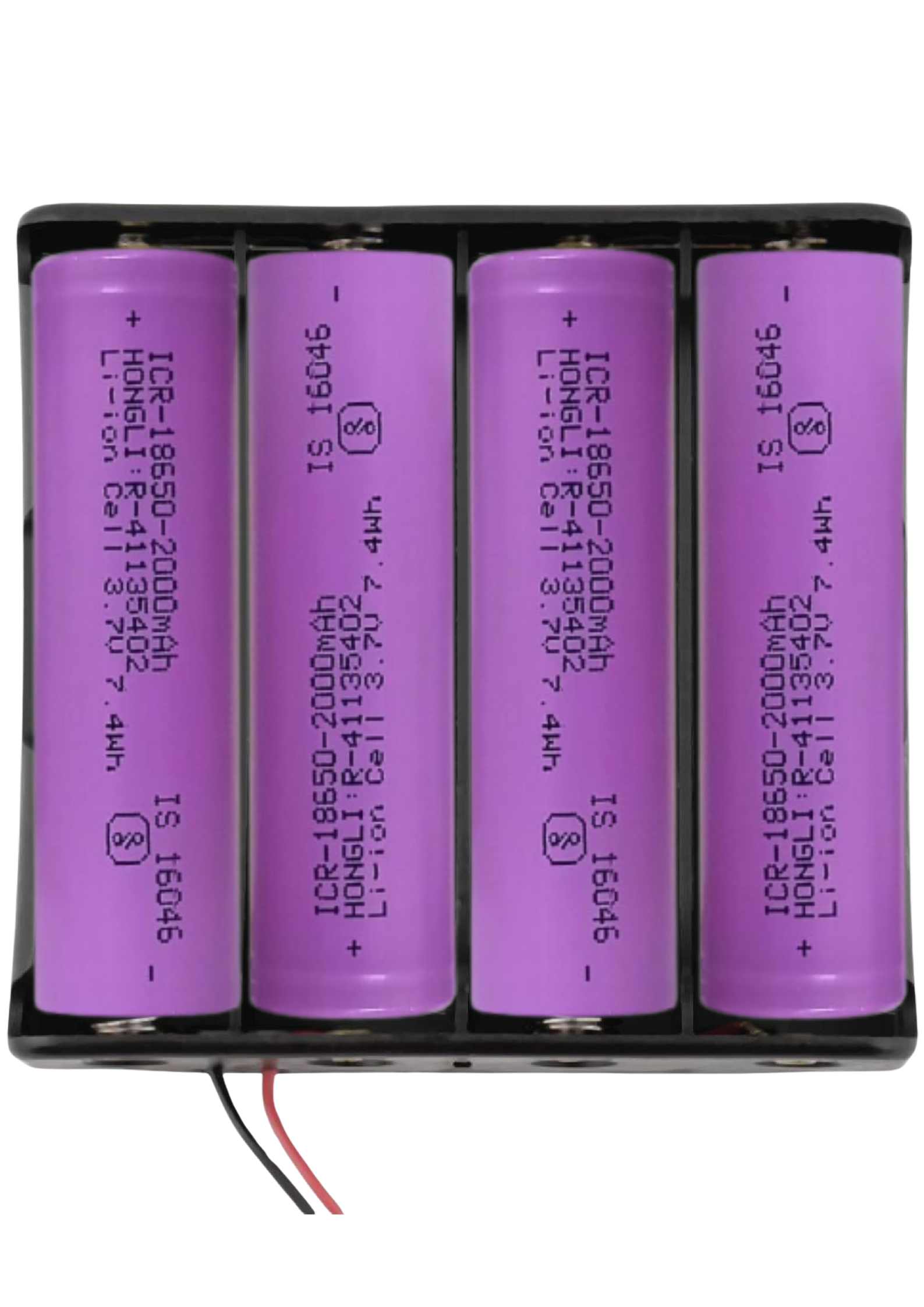
 Design with 4S Battery 18650 Lithium ion in Cirkit Designer
Design with 4S Battery 18650 Lithium ion in Cirkit DesignerIntroduction
The 4S battery configuration consists of four 18650 lithium-ion cells connected in series. This arrangement increases the voltage output while maintaining the same capacity as a single cell. Each 18650 cell typically has a nominal voltage of 3.7V, so a 4S configuration provides a nominal voltage of 14.8V (3.7V × 4). This makes it ideal for applications requiring higher voltage, such as electric vehicles, power tools, drones, and portable electronics.
Explore Projects Built with 4S Battery 18650 Lithium ion
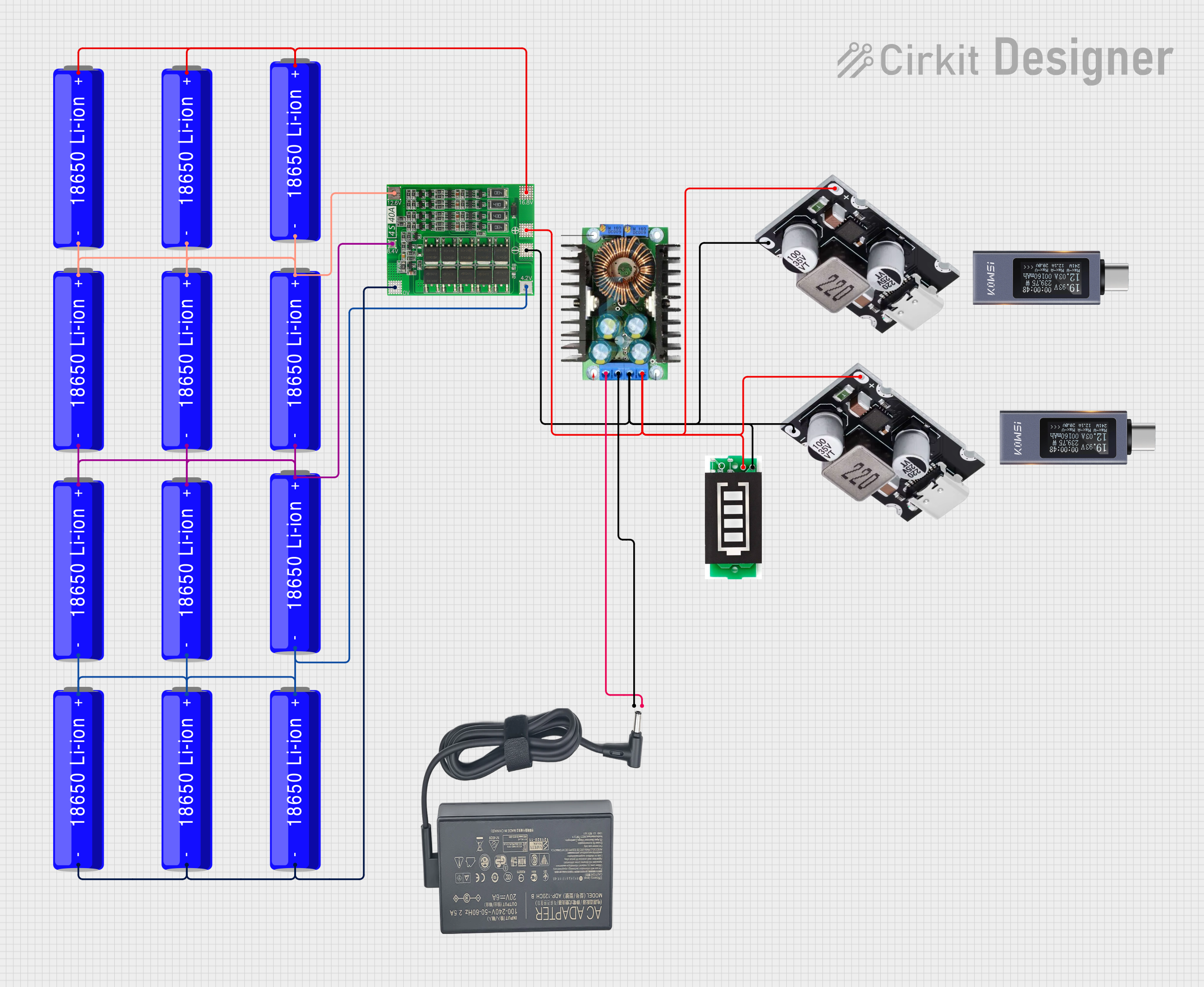
 Open Project in Cirkit Designer
Open Project in Cirkit Designer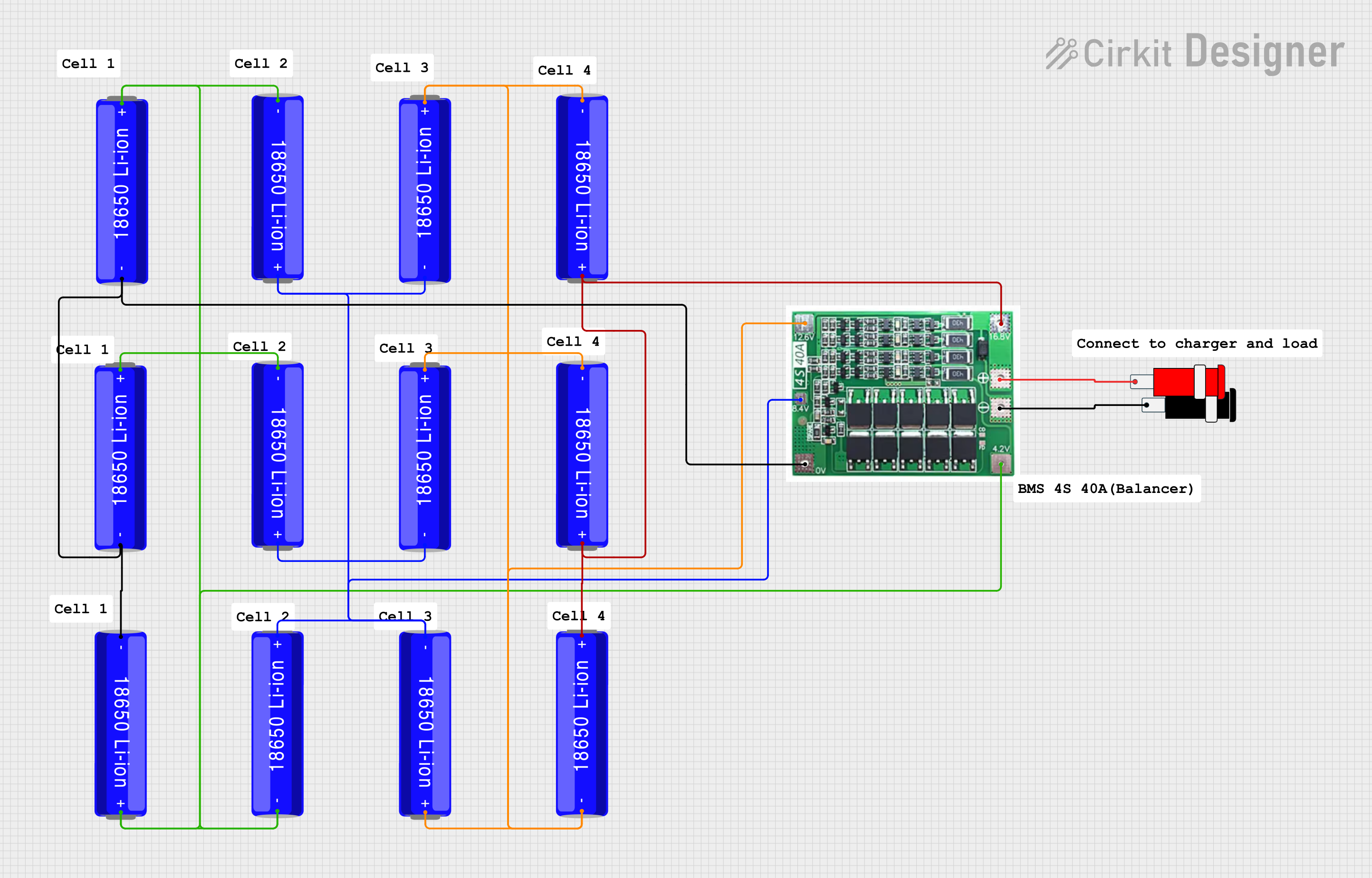
 Open Project in Cirkit Designer
Open Project in Cirkit Designer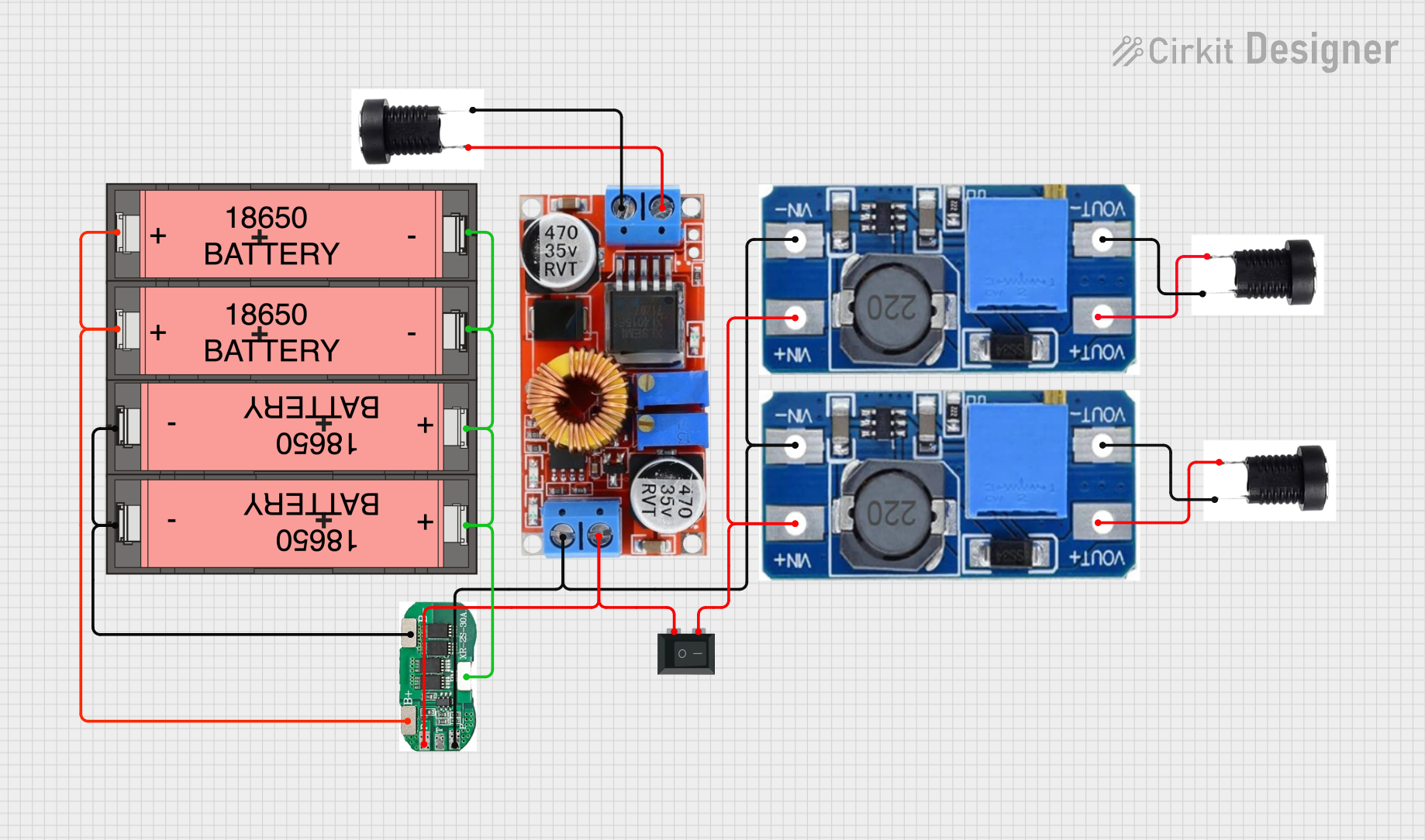
 Open Project in Cirkit Designer
Open Project in Cirkit Designer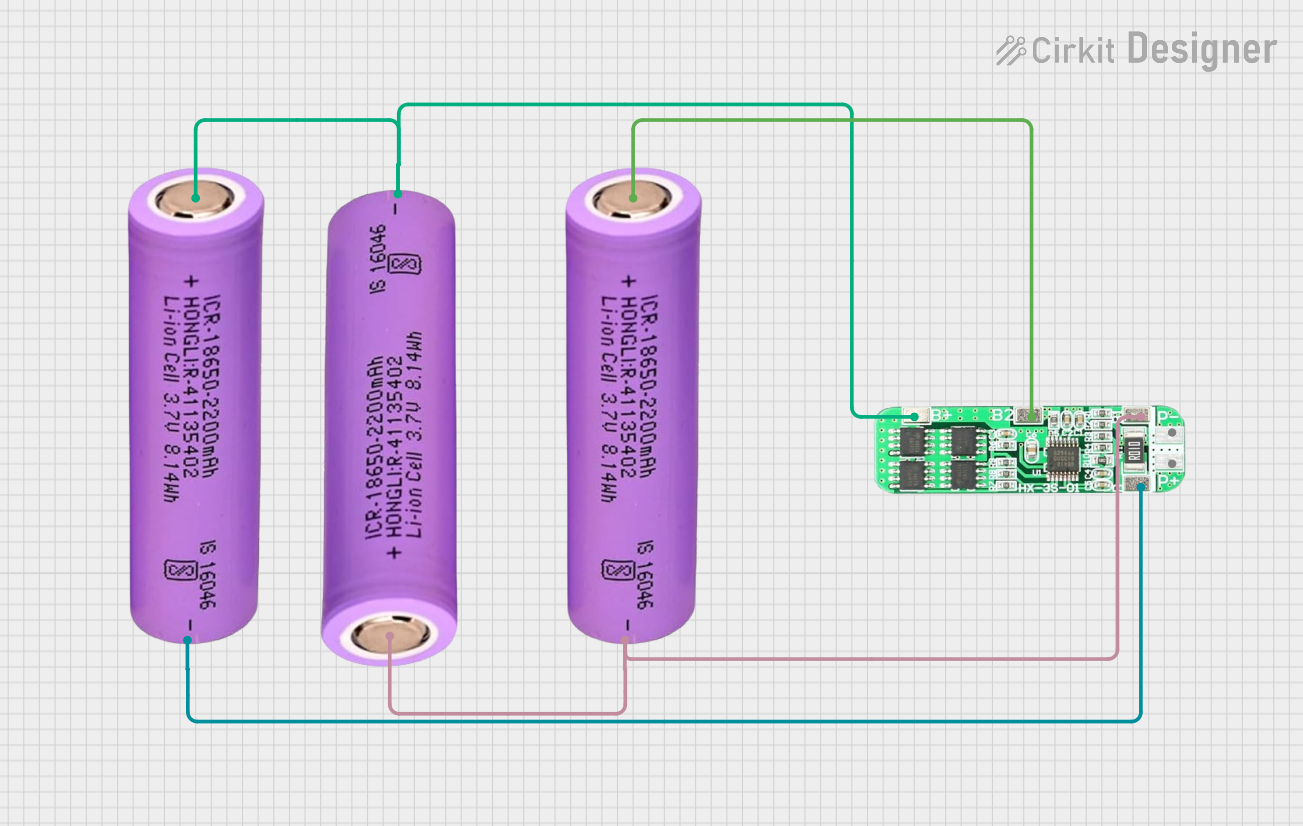
 Open Project in Cirkit Designer
Open Project in Cirkit DesignerExplore Projects Built with 4S Battery 18650 Lithium ion

 Open Project in Cirkit Designer
Open Project in Cirkit Designer
 Open Project in Cirkit Designer
Open Project in Cirkit Designer
 Open Project in Cirkit Designer
Open Project in Cirkit Designer
 Open Project in Cirkit Designer
Open Project in Cirkit DesignerCommon Applications
- Electric vehicles and e-bikes
- Drones and RC vehicles
- Portable power banks
- Solar energy storage systems
- High-power LED lighting systems
Technical Specifications
Below are the key technical details for a typical 4S 18650 lithium-ion battery pack:
| Parameter | Value |
|---|---|
| Nominal Voltage | 14.8V (3.7V × 4 cells) |
| Maximum Voltage | 16.8V (4.2V × 4 cells) |
| Minimum Voltage (Cutoff) | 12.0V (3.0V × 4 cells) |
| Capacity | Depends on the individual cell capacity |
| Typical Cell Capacity | 2000mAh to 3500mAh per cell |
| Configuration | 4 cells in series (4S) |
| Maximum Discharge Current | Varies by cell, typically 10A to 30A |
| Charging Voltage | 16.8V (constant voltage charging) |
| Charging Current | Typically 0.5C to 1C of the cell capacity |
| Protection Circuit | Overcharge, over-discharge, short circuit |
Pin Configuration and Descriptions
A 4S battery pack typically includes a Battery Management System (BMS) for safety and monitoring. The BMS has the following pin configuration:
| Pin Name | Description |
|---|---|
| B+ | Positive terminal of the battery pack |
| B- | Negative terminal of the battery pack |
| P+ | Positive terminal for load and charging |
| P- | Negative terminal for load and charging |
| B1 | Connection to the first cell's positive terminal |
| B2 | Connection to the second cell's positive terminal |
| B3 | Connection to the third cell's positive terminal |
| B4 | Connection to the fourth cell's positive terminal |
Usage Instructions
How to Use the 4S Battery in a Circuit
- Connect the Battery Pack: Ensure the 4S battery pack is properly connected to the circuit. Use the B+ and B- terminals for the main power output.
- Use a BMS: Always include a Battery Management System (BMS) to protect the battery from overcharging, over-discharging, and short circuits.
- Charging the Battery:
- Use a dedicated lithium-ion battery charger with a 16.8V output.
- Connect the charger to the P+ and P- terminals of the BMS.
- Load Connection: Connect your load (e.g., motor, LED, or other devices) to the P+ and P- terminals of the BMS.
Important Considerations and Best Practices
- Avoid Overcharging: Never exceed 16.8V when charging the battery pack.
- Avoid Over-Discharging: Do not let the voltage drop below 12.0V to prevent damage to the cells.
- Use Proper Wiring: Ensure all connections are secure and use wires rated for the current draw of your application.
- Monitor Temperature: Avoid exposing the battery pack to extreme temperatures (above 60°C or below -20°C).
- Balance Charging: Use a charger with a balancing feature to ensure all cells are charged evenly.
Example: Connecting to an Arduino UNO
To power an Arduino UNO with a 4S battery pack, use a DC-DC step-down converter to reduce the voltage to 5V or 7-12V (the recommended input voltage range for the Arduino UNO). Below is an example circuit and code:
Circuit Diagram
- Connect the 4S battery pack to the input of the DC-DC converter.
- Set the output of the DC-DC converter to 7-12V.
- Connect the output of the DC-DC converter to the Arduino UNO's VIN and GND pins.
Example Code
// Example code to read a sensor and control an LED using Arduino UNO
// powered by a 4S battery pack with a DC-DC converter
const int sensorPin = A0; // Analog pin connected to the sensor
const int ledPin = 13; // Digital pin connected to the LED
void setup() {
pinMode(ledPin, OUTPUT); // Set LED pin as output
Serial.begin(9600); // Initialize serial communication
}
void loop() {
int sensorValue = analogRead(sensorPin); // Read sensor value
Serial.println(sensorValue); // Print sensor value to Serial Monitor
if (sensorValue > 500) { // If sensor value exceeds threshold
digitalWrite(ledPin, HIGH); // Turn on the LED
} else {
digitalWrite(ledPin, LOW); // Turn off the LED
}
delay(100); // Wait for 100 milliseconds
}
Troubleshooting and FAQs
Common Issues and Solutions
Battery Pack Not Charging:
- Cause: Charger not compatible or BMS malfunction.
- Solution: Use a charger with a 16.8V output and check the BMS connections.
Uneven Cell Voltages:
- Cause: Cells are not balanced.
- Solution: Use a balancing charger or replace the BMS with one that supports cell balancing.
Battery Overheating:
- Cause: Excessive current draw or poor ventilation.
- Solution: Reduce the load or improve airflow around the battery pack.
Low Runtime:
- Cause: Degraded cells or insufficient capacity.
- Solution: Test individual cells and replace any that are underperforming.
FAQs
Q: Can I use a 4S battery pack without a BMS?
- A: It is not recommended. A BMS is essential for safety and to prevent overcharging or over-discharging.
Q: How do I calculate the total capacity of a 4S battery pack?
- A: The total capacity is the same as the capacity of a single cell. For example, if each cell is 3000mAh, the total capacity is 3000mAh.
Q: Can I connect multiple 4S packs in parallel?
- A: Yes, you can connect multiple 4S packs in parallel to increase the total capacity, but ensure all packs are balanced and have the same voltage before connecting.
Q: What is the lifespan of a 4S battery pack?
- A: The lifespan depends on usage and charging habits but typically ranges from 300 to 500 charge cycles.